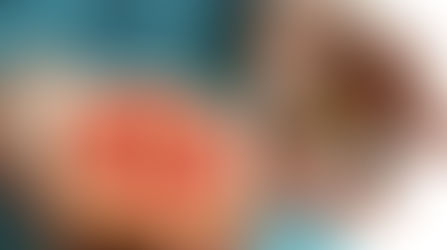Diverticular Disease
- Elisa Ross, RDN, LD
- Jun 16, 2016
- 4 min read

If you’ve ever had a diverticulitis attack, you know it’s not an experience worth repeating. The pain, discomfort, medications, and trips to the hospital are enough for many to want to do everything they can to prevent another attack.
Diverticulitis starts with diverticulosis, which is the condition of having herniations, or outpouchings, of the inner lining of the colon, or large intestine. These outpouchings are called diverticula. They usually occur in the sigmoid or transverse colon, and there can be as few as one or up to dozens of diverticula in an individual. They range in size from millimeters to centimeters across. The majority of those with diverticulosis are asymptomatic.
Diverticulitis, however, is difficult to ignore. It occurs when the diverticula become inflamed due to bacteria or other particles being trapped inside. This often leads to pain and spasms in the lower left abdomen. More serious symptoms include distension, nausea or vomiting, constipation or diarrhea, fever, and chills. Lower gastrointestinal bleeding can also occur. Complications may include abscess, perforation, fistula, or intestinal obstruction. Diverticulitis can sometimes lead to chronic symptoms that mirror Irritable Bowel Syndrome (IBS) even after the acute phase has passed. Anywhere from one percent to twenty-five percent of those with diverticulosis will eventually get diverticulitis.
Risk Factors
Diverticular Disease, DD, (an umbrella term for both types) is a condition of modern civilization. The incidence is much higher in industrialized nations; it is much more rare iin less developed nations. There are probably many factors at play here, but a highly processed diet coupled with less than adequate physical activity likely play a role. Many believe that a poor diet low in fiber increases risk significantly. Studies on fiber intake and DD have had mixed results, but the fiber hypothesis still stands. The hypothesis is as follows: As fiber intake increases, stool volume increases, which in turn distends the colon and “exercises it.” This leads to both more frequent trips to the bathroom, as well as decreased pressure within the colon. On the other hand, a diet low in fiber would increase the pressure within the colon, lead to slower transit time, chronic constipation and straining, which is often seen as a contributing factor to DD.
Many other factors can increase risk. Men are more susceptible than women. Age is a big factor. Thirty to forty percent of Americans above the age of fifty have diverticulosis. By age sixty, that number increases to fifty percent. By age eighty, seventy percent have it. Obesity, smoking, stress, and chronic inflammation can all play a role. Having IBS, gallbladder disease, or Coronary Artery Disease also increases one’s risk.
Nutritional Considerations
For acute diverticulitis, depending on how severe the case is, patients may be put on no food or liquids, just clear liquids, or a low fiber diet until the pain and inflammation decrease. A low fiber diet would be roughly ten to fifteen grams of fiber per day. After symptoms subside, gradually increase fiber in the diet to the recommended intake (see below). A low-fat diet may also be helpful.
In the case of diverticulosis, the goal is to prevent diverticulitis. Old advice included avoiding nuts and seeds because it was thought that these foods could get easily caught in the diverticula (such as sunflower seed, pumpkin, poppy, sesame, and popcorn). We now know that this is unecessary, and that such foods may even be protective. A high fiber diet is the recommended dietary therapy: For those under age 50, aim for 25 grams for women and 38 grams for men. This is roughly double the average American intake. For those over age fifty, the goal is 21 grams and 30 grams, respectively. Vegetables, fruits, and whole grains are all good sources of fiber. Make sure to include some starchy root vegetables and tubers, which are particularly nourishing for the intestinal flora. Bone broths are particularly soothing and nourishing for the intestinal tract. If raw fruits and vegetables are irritating, cooking is a good solution. Adding fermented foods as well can help support the intestines, which can also be taken in pill form. While whole foods are the best source of fiber, fiber supplements are available if getting enough fiber from food is an issue.
Here are some ideas to increase your fiber intake. Eat the whole fruit instead of drinking the juice (an orange versus a glass of orange juice, for example). Choose cereal with a whole grain as its first ingredient instead of a more processed cereal. Try cooking a porridge of quinoa, whole oats, or buckwheat groats. Instead of snacking on chips, chop up crunchy vegetables such as carrots, bell peppers, cucumbers, radishes, and turnips. Use beans and lentils in cooking and either combine them with meat dishes or substitute them for the meat a few times a week. Make half your plate at every meal vegetables. If you eat refined (white) bread, pasta, or rice, choose whole grain options instead or substitute starchy vegetables such as white potato, sweet potato, and winter squash.
While the evidence for fiber in preventing diverticulosis is mixed, a high fiber diet is still the recommended therapy. The fiber hypothesis is very plausible, and besides which, there are many other reasons to eat fiber. Fiber supports overall health and helps prevent many chronic diseases. Fiber naturally comes in whole foods like vegetables, fruits, and whole grains, which are all a part of a nourishing diet. Just remember - if you have been eating a high-processed, low-fiber diet for a while, be sure to increase fiber gradually, and increase your intake of water along with the fiber. Your intestinal flora will need time to adjust, so take it slow.
The information provided in this article is intended for general use only and is not to be used in place of medical advice from a licensed health professional.

























Comments